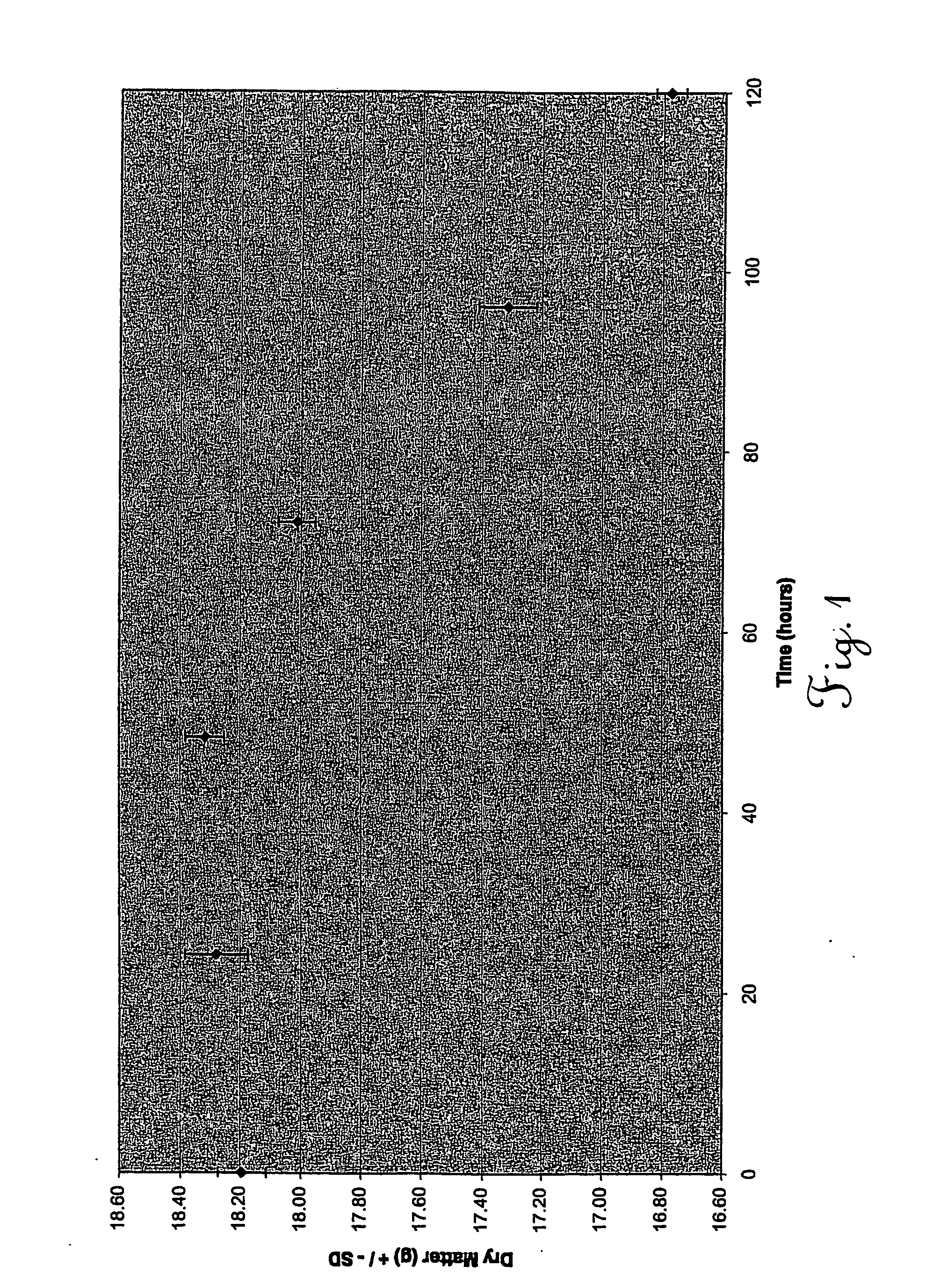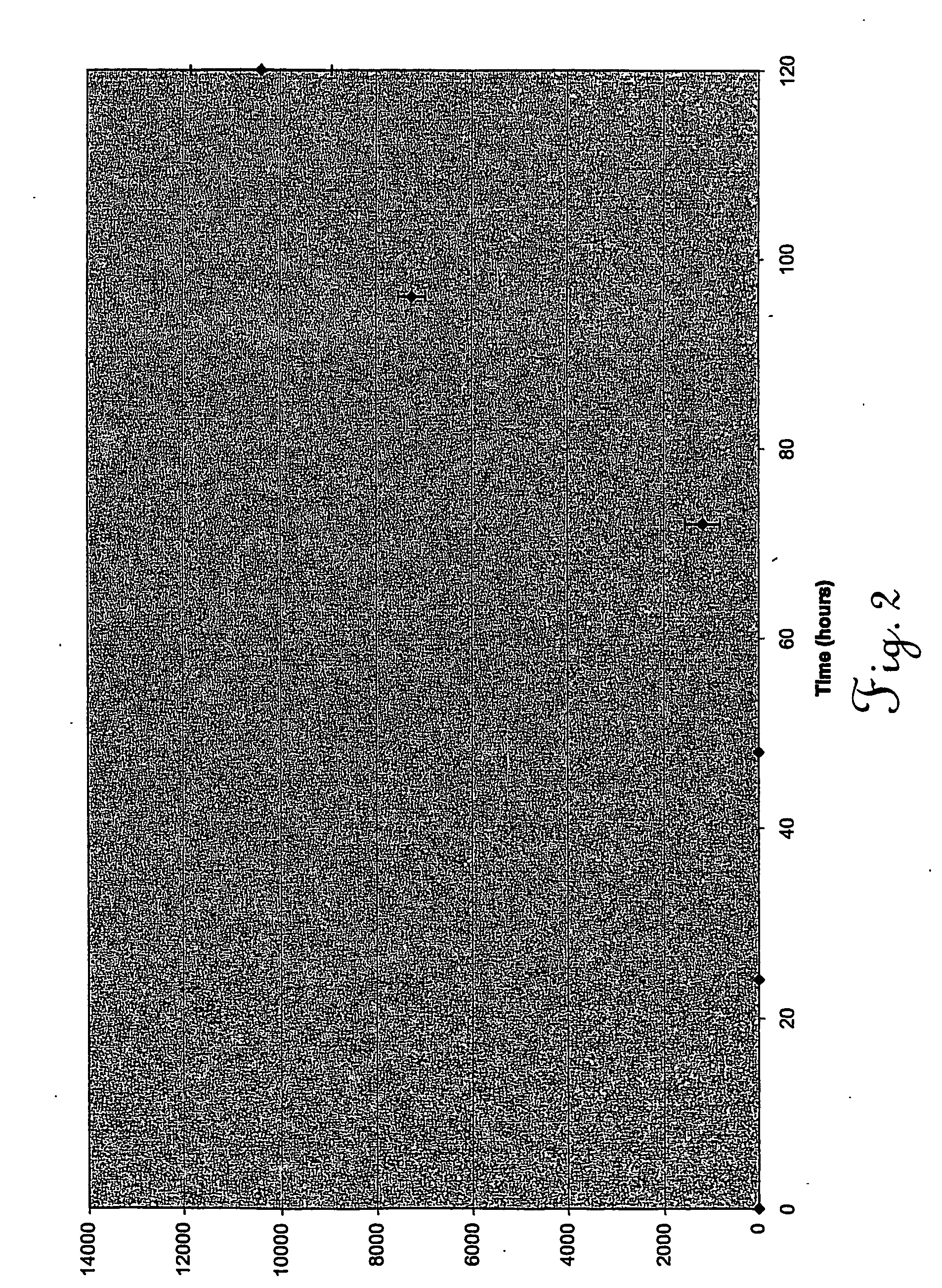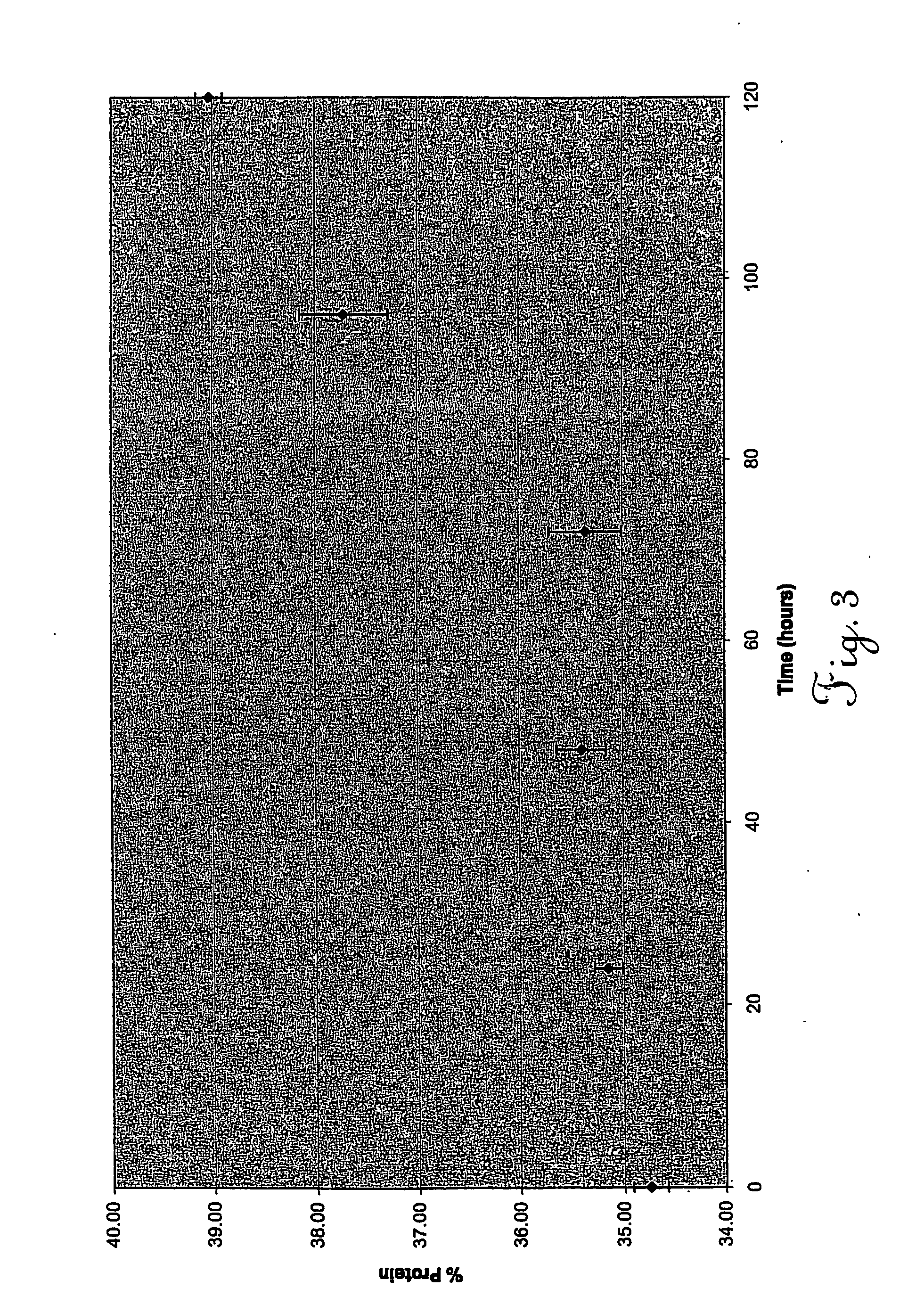Methods for improving the nutritional quality of residues of the fuel, beverage alcohol, food and feed industries
a technology of fuel, beverage alcohol, food and feed industry, applied in the field of new methods, can solve the problems of general considered less desirable as animal feed, tend to be lower in protein, etc., and achieve the effect of improving the nutritional quality of fibrous by-products and reducing the fat content of by-products or residues
- Summary
- Abstract
- Description
- Claims
- Application Information
AI Technical Summary
Benefits of technology
Problems solved by technology
Method used
Image
Examples
example 1
[0030] A fermentation time course was conducted over a period of 120 hours using DDG obtained from a commercial fuel ethanol distillery.
[0031] Working slants of the filamentous fungus, Rhizopus oligosporus 2UV3, maintained on Potato Dextrose Agar, were used to inoculate a liquid medium of the following composition; glucose 5 g / L, yeast extract 18 g / L, KCl 0.5 g / L, MgSO4.7H2O 1.5 g / L, KH2PO4 1.0 g / L, cornstarch 60 g / L and ground wheat bran 20 g / L.
[0032] Briefly, 2×3 mm squares of growth from a single slant were used to inoculate 200 ml of the liquid medium contained in a 500 ml flask. The culture was incubated at 30° C. for 2 days on an orbital shaker set at 200 rpm. This culture was then used to inoculate triplicate flasks corresponding to each time point of the time course study. Each flask contained 25 g DDG and 1.5 g soy flour as an additional source of nutrients to support fungal growth.
[0033] Twenty five milliliters of the two-day old seed culture was diluted in 500 ml steri...
example 2
[0035] This example demonstrates the ability of this fermentation system to produce valuable hydrolytic enzymes of fungal origin for use as direct feed additives in animal diets. The enzyme in this particular example is a fungal protease produced by the Rhizopus strain described in Example 1. Briefly, flasks containing the DDG / soy flour mix were inoculated as described in Example 1. Additional sterile water was added to generate final moisture levels of 43, 45, 46 and 18%, respectively. Triplicate flasks were inoculated for each moisture level. Flasks were incubated at 30° C. and 70-80% humidity for 5 days. The fermented DDG was then extracted in 20 volumes of warm water for 1 hour at 30° C. Extracts were assayed for fungal protease activity using a standard procedure and the activities present in each preparation were expressed as protease units (HUT) present per gram of starting DDG. Results are presented in Table 2.
TABLE 2Protease production by Rhizopus on a DDG substrate.Moist...
example 3
[0036] The protease produced in Example 2 was directly compared with an existing commercial protease preparation in a chick growth assay. Protease extracted from fermented DDG was dried and adjusted to a final enzyme activity of 8,000 HUT / g powdered preparation; an activity identical to the aforementioned commercial preparation. The enzyme preparations were used to supplement a corn-soybean meal- based chick diet at a level of 0.5 g / kg and 1.0 g / kg, respectively. Diets were fed to 42 chicks per treatment group for 14 days from placement on the trial. Body weight gains recorded at the end of this period are presented in Table 3.
TABLE 3Bird body weight gain (g) following dietary supplementation witha commercial protease enzyme (ComP) versus theDDG-derived protease (DP).TreatmentBody Weight Gain (g)0.5 g / kg ComP2891.0 g / kg ComP3000.5 g / kg DP3071.0 g / kg DP296
[0037] It is clear from these data that both protease preparations resulted in similar bird performance, indicating that the DDG...
PUM
 Login to View More
Login to View More Abstract
Description
Claims
Application Information
 Login to View More
Login to View More - R&D
- Intellectual Property
- Life Sciences
- Materials
- Tech Scout
- Unparalleled Data Quality
- Higher Quality Content
- 60% Fewer Hallucinations
Browse by: Latest US Patents, China's latest patents, Technical Efficacy Thesaurus, Application Domain, Technology Topic, Popular Technical Reports.
© 2025 PatSnap. All rights reserved.Legal|Privacy policy|Modern Slavery Act Transparency Statement|Sitemap|About US| Contact US: help@patsnap.com



